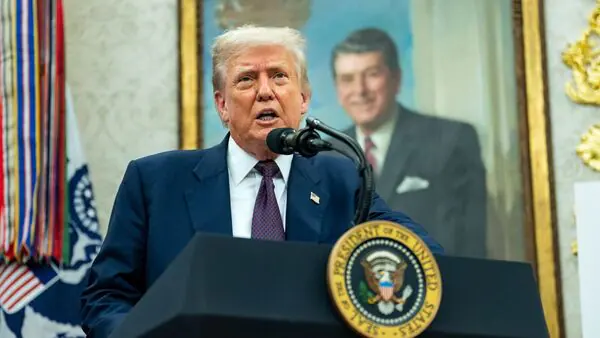On August 6, 2025, U.S. President Donald Trump announced a sweeping tariff hike on Indian imports, effectively doubling the duty to 50%. This move is part of a punitive response to India’s continued purchase of Russian oil, and the repercussions are already rippling through India’s key export sectors.
The Sectors Under Fire
A staggering range of industries now find themselves directly in the crosshairs:
- Textiles & Apparel – Facing duties of up to 60%, these labour-intensive goods have become significantly less competitive.
- Gems & Jewellery – With tariffs soaring beyond 50%, the industry may be looking at new manufacturing hubs.
- Seafood (Shrimp) – Tariffs climbing to 33% from August 7, and to 58% after August 27 when additive duties kick in.
- Leather, Footwear, Chemicals, Machinery, Carpets, Furniture – All are hit hard, with duties ranging from 50% to 63% depending on the category.
- Auto Parts – Nearly half of India’s auto-component exports to the U.S. will now incur this steep tariff.
The Price Tag: Who Pays?
Exporters Caught Offguard
India’s exporters, especially MSMEs, are grappling with thin margins and diminished competitiveness. Many buyers have already hit the pause button on existing orders.
Investor Confidence Wavers
As fears grow over prolonged trade friction, export-linked stocks—like textiles, gems, and shrimp—fell by up to 6%, dragging broader indices downward.
Consumers Feel It Too
With analysts warning that the tariff burden will eventually translate to higher consumer prices, both sides of the trade equation stand to suffer.
GDP Loses Out
Experts anticipate that ongoing trade friction, coupled with lost export revenues, could shave 0.3–0.5% off India’s GDP growth.
What’s Next?
Window for Negotiation
India has a brief window to engage—U.S. trade envoys are set to visit in August, offering a last chance to negotiate or attenuate the damage.
Supply Chain Shifts
Exporters are exploring alternative manufacturing routes, including diversifying to locations like Dubai or Mexico, to retain access to U.S. markets.
Government Support Needed
To shield vulnerable industries, policymakers may need to roll out relief measures, including financial aid, market diversification, and policy interventions.
Final Thoughts
This dramatic tariff hike marks a turning point in U.S.–India trade relations. With sectors like textiles, gems, shrimp, and leather facing existential pressure, the cost of staying competitive has skyrocketed. The path forward lies in agile negotiation, creative supply-chain solutions, and proactive policy support.
India’s time to act is now.








